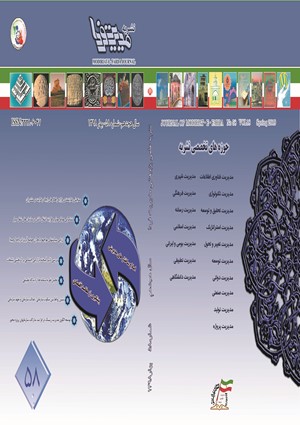قیمتگذاری و تبلیغات همکارانه در زنجیره تامین دو سطحی با رویکرد تئوری بازیها
الموضوعات :
1 - دانشگاه آزاد اسلامی الکترونیکی، تهران
الکلمات المفتاحية: زنجیره تامین تبلیغات همکارانه قیمتگذاری, تئوریبازیها مسئله روزنامه فروش ,
ملخص المقالة :
در این مقاله به بررسی هماهنگی تصمیمات قیمتگذاری و تبلیغات همکارانه در یک زنجیره تامین دو ردهای میپردازیم. از رویکرد تئوری بازی جهت مدلسازی و حل همزمان متغیرهای قیمت، مقدار سفارش اقتصادی، هزینه تبلیغات خرده فروش و سازنده در نقطه تعادل بازی بهره گرفته میشود. سه سناریوی بازی بر اساس مدل مسئله پسر روزنامه فروش طراحی شده: 1) بازی استکلبرگ سازنده که در آن سازنده نقش پیشرو و خرده فروش به عنوان پیرو ، 2) بازی نش که در آن سازنده و خرده فروش از قدرت یکسانی در بازار برخوردارند و 3) بازی همکاری کامل که در آن سازنده و خردهفروش با همکاری بهترین تصمیمات را اتخاذ مینمایند. نشان خواهیم داد در بازی همکارانه، نسبت به زنجیره نامتمرکز افزایش هزینه تبلیغات به زنجیره تحمیل میگردد، اما منجر به افزایش سود و افزایش رضایت مشتری میگردد که این به معنای یک سیستم تصمیمگیری برد –برد برای مدیران و مشتریان زنجیره میباشد.
1. Dridi, D., & Ben Youssef, S. (2015). A Game Theoretic Framework for Competing/Cooperating Retailers under price and advertising dependent demand. Munich Personal RePEc Archive, available at http://mpra.ub.uni-muenchen.de/63317/.
2. Berger, P. (1972). Vertical cooperative advertising ventures. Journal of Marketing research 9 (3), 309 - 312.
3. Aust, G., & Buscher, U. (2014). Cooperative advertising models in supply chain management: A review. European Journal of Operational Research, 234(1), 1-14.
4. Xie, J., & Neyret, A. (2009). Computers & Industrial Engineering Co-op advertising and pricing models in manufacturer – retailer supply chains. Computers & Industrial Engineering, 56(4), 1375–1385. http://doi.org/10.1016/j.cie.2008.08.017
5. He, Y., Zhao, X., Zhao, L., & He, J. (2009). Coordinating a supply chain with effort and price dependent stochastic demand. Applied Mathematical Modelling, 33(6), 2777-2790
6. Karray, S., & Amin, S. H. (2015). Cooperative advertising in a supply chain with retail competition. International Journal of Production Research, 53(1), 88-105.
7. Yan, R., Cao, Z., & Pei, Z. (2016). Manufacturer's cooperative advertising, demand uncertainty, and information sharing. Journal of Business Research, 69(2), 709-717.
8. Chen, T. H. (2011). Coordinating the ordering and advertising policies for a single-period commodity in a two-level supply chain. Computers & Industrial Engineering, 61(4), 1268-1274.
9. Naimi Sadigh, A., Chaharsooghi, S. K., & Sheikhmohammady, M. (2016). A game theoretic approach to coordination of pricing, advertising, and inventory decisions in a competitive supply chain. Journal of Industrial and Management Optimization, 12(1), 337-355
10. Jørgensen, S., & Zaccour, G. (2014). A survey of game-theoretic models of cooperative advertising. European Journal of Operational Research, 237(1), 1-14.
11. Alirezaei, A. (2014). International Journal of Industrial Engineering Computations, 5, 23–40. http://doi.org/10.5267/j.ijiec.2013.09.006
12. Szmerekovsky, J. G., & Zhang, J. (2009). Pricing and two-tier advertising with one manufacturer and one retailer. European Journal of Operational Research, 192(3), 904–917.
13. SeyedEsfahani, Mir Mehdi, Maryam Biazaran, and Mohsen Gharakhani. "A game theoretic approach to coordinate pricing and vertical co-op advertising in manufacturer–retailer supply chains." European Journal of Operational Research 211.2 (2011): 263-273.
14. [3]Aust, G. (2015). Vertical cooperative advertising and pricing decisions in a manufacturer-retailer supply chain: a game-theoretic approach. In Vertical Cooperative Advertising in Supply Chain Management (pp. 65-99). Springer International Publishing.


